Results 7,031 to 7,040 of 12089
Thread: Anandtech News
-
05-31-17, 12:25 PM #7031
Anandtech: ASRock Gives AMD Ryzen Mini-ITX Treatment, Launches X370 Gaming ITX/ac
ASRock has introduced a miniature motherboard for AMD Ryzen microprocessors, one of a few such motherboards in the industry. Despite being very small, the X370 Gaming ITX/ac offers everything that a fairly powerful gaming system might require and its price is not too high.
The ASRock X370 Gaming ITX/ac is based on the AMD X370 chipset and supports all currently available processors in the AM4 form-factor, including A-series APUs as well as all Ryzen CPUs. The motherboard has a digital eight-phase VRM for the CPU designed to guarantee clean power supply (stability, overclocking potential, etc.). According to ASRock, the mainboard can handle DDR4-3200+ memory (assuming that particular modules work well with AMD Ryzen processors). The new platform has two DIMM slots in total.
Like many other motherboards in the Mini-ITX form-factor, the X370 Gaming ITX/ac has one PCIe 3.0 x16 slot, one M.2 slot for PCIe 3.0 x4 or SATA SSDs, as well as four SATA ports. Meanwhile in a light bit of irony, the mainboard uses GbE and 802.11ac Wi-Fi controllers from Intel. As for other I/O, everything seems to be pretty standard here: the motherboard has two HDMI outputs, five USB 2.0 ports, six USB 3.0 headers (including one Type-C) as well as a 7.1-channel audio powered by Realtek ALC1220 codec with Creative’s Sound Blaster Cinema 3 enhancing software.
At present, the ASRock X370 Gaming ITX/ac has only one direct rival, the Biostar Racing X370GTN introduced earlier this year. The Racing X370GTN does not have Wi-Fi support, but it has two USB 3.1 Gen 2 (10 Gbps) headers, including one Type-C. Meanwhile, the X370 Gaming ITX/ac seems to have a more advanced VRM for those looking forward overclocking capabilities.ASRock's Mini-ITX Motherboard for AMD Ryzen X370 Gaming ITX/ac CPU Support CPUs in AM4 form-factor
AMD Ryzen and AMD A-series APUsGraphics PCIe 3.0 x16, or integrated in case of APUs Chipset AMD X370 Memory Two DDR4 DIMM slots Ethernet 2 × Intel GbE controllers Display Outputs 2 × HDMI for APUs Storage 4 × SATA 6 Gbps
1 × M.2 (PCIe 3.0 x4 or SATA)Audio Realtek ALC1220
7.1 channel audio
Creative’s Sound Blaster Cinema 3 enhancing softwareUSB 5 × USB 3.0 Type-A
1 × USB 3.0 Type-C
5 × USB 2.0Other I/O 802.11ac Wi-Fi + Bluetooth 4.2 Form-Factor Mini-ITX MSRP $150 ~ $160
The ASRock X370 Gaming ITX/ac will be available in the coming weeks for $150 – $160, according to the manufacturer. Keep in mind that since there are only two AMD X370-based Mini-ITX motherboards announced so far and small form-factor systems are gaining traction, demand for the X370 Gaming ITX/ac will be very high. That said, don't be surprised if there's some overpricing from select retailers.
Related Reading:
- ASUS Announces ROG STRIX H270I & B250I Mini-ITX Motherboards
- ZOTAC Announces GeForce GTX 1080 for Mini-ITX PCs
- Lian Li PC-Q37 Announced: Two-Stage Mini-ITX Chassis with Tempered Glass
- The ASUS Maximus VIII Impact Z170 ROG Mini-ITX Motherboard Review
More...
-
06-01-17, 07:08 AM #7032
Anandtech: Seagate Launches The 4TB Game Drive For Xbox Game Pass Special Edition
Seagate has been partnering with Microsoft to supply official accessories for the Xbox console for a couple of generations now, and we took a look at one back in 2015 with the original Game Drive for Xbox. Although just a USB hard drive, the Game Drive for Xbox performed well enough, and didn’t really cost much more than a comparable USB drive without the Xbox branding. Today though, Seagate is announcing a new successor called the Game Drive for Xbox Game Pass Special Edition, which takes the partnership in a great direction.
Although we didn’t cover the news, Microsoft just recently announced a new game subscription service called Xbox Game Pass, which is launching to all users today, and it lets you access over 100 Xbox games for a monthly subscription fee of $9.99 per month. It’s similar, but not identical, to the Playstation subscription service, except that it includes Xbox One titles, and its not a streaming service, so you’ll have to download the full games to take advantage.
If you’re going to be downloading all of these new games, you may find yourself running out of internal storage, so Seagate is offering both a 2 TB and 4 TB version of the Game Drive for Xbox, and it now matches the color and styling of the latest Xbox One S.
As an added value, Seagate is offering a one-month subscription to the Xbox Game Pass with the 2 TB model, and a two-month subscription with the 4 TB model. The MSRP is $89.99 for the smaller version, and $129.99 for the 4 TB version, so once again, the price premium to get a branded drive for your Xbox is not excessive, although it is a bit more than a non-branded model. The pricing is right in-line with the previous green models which had also been bumped to the same capacities. Seagate also offers a Game Drive for Xbox SSD with a 512 GB SSD, if you’d prefer to forgo more storage for something a bit faster.
The new white models look great, and with a nice value-add in the subscription, helps offset the price increase from their normal lineup of USB drives. It’s not for everyone, but if you’re the kind of person who likes to take their game library with them, having an Xbox branded model could be a nice perk.
Source: Seagate
More...
-
06-01-17, 07:08 AM #7033
Anandtech: Acer Predator X35 & ASUS ROG Swift PG35VQ Unveiled: 35-inch G-SYNC HDR Mon
At CES 2017, both Acer and ASUS simultaneously announced two 4K G-SYNC HDR displays. Featuring ultra-fast 144Hz refresh rates, peak brightness of 1000 nits, full-array backlight, wide color gamut, and minimal input latency, these were the first HDR gaming monitors to be revealed. Although those two monitors aren't even available yet - they are slated for release later this summer - both Acer and ASUS have just announced two new 35-inch curved G-SYNC HDR monitors at Computex 2017.
The new Acer Predator X35 and ASUS ROG Swift PG35VQ are twins in many respects, since they both feature a custom AU Optronics G-SYNC HDR panel that was co-developed with NVIDIA. This 35-inch panel not only has a 3440x1440 resolution with an ultrawide 21:9 aspect ratio, but its refresh rate runs at a blistering 200Hz. The WQHD panel sports a peak brightness of 1000 nits, and a full-array backlight with 512 individually-controllable LED zones. The HDR format in question is HDR10, since that is the standard being adopted for PC gaming. The monitors apparently support the cinema-standard DCI-P3 color gamut - to what percentage is unknown - made possible by improving the backlighting with a Quantum Dot Enhancement Film (QDEF). There is no information on response times, but there are claims of "almost zero input latency".
The two monitors will feature DisplayPort 1.4 inputs, which is an absolutely necessity to handle the up to 29.7Gbps bandwidth that this panel will require. By comparison, HDMI 2.0 is limited to a mere 18Gbps, and thus would be limited to 120Hz.
While we have no unique information about the Acer model, the ASUS display will have integrated RGB LED lighting in the form of an ROG logo that shines down onto the desk and a rear ROG logo that features RGB LEDs and that can be synchonized with other Aura Sync-enabled PC components and peripherals.
The Acer Predator X35 and ASUS ROG Swift PG35VQ are scheduled to be released sometime in Q4 2017.
More...
-
06-01-17, 09:05 AM #7034
Anandtech: EK Water Blocks Announces Aluminum-based Fluid Gaming Series Open Loop Liq
EK Water Blocks revealed the Fluid Gaming series of full loop water cooling kits during Computex. EKWB’s new water cooling lineup is designed to further augment their product stack, offering a cheaper option for mainstream water block users.
EK Water Blocks offers a wide range of water cooling products including reservoirs, radiators, pump tops, fittings, and, of course, water blocks. With its all-encompassing portfolio of water cooling components, the company is also able to offer bundle packages to bring the cost down for newcomers to the water cooling scene. EKWB offers kits that include all the parts you need to build an open loop water cooling setup.
The cost however isn’t cheap. EKWB’s boxed water cooling kits range from almost $200 to nearly $400. And that doesn’t include a GPU water block.
EKWB recognized that water cooling would always be a niche market at that price range, so it decided to do something about that. The company revealed the EK Fluid Gamer series of full-loop kits, which are available for as little as $150.
EKWB traditionally uses electrolytic copper to build its water blocks, and more often than not, it opts for nickel-plated copper. The use of high-end materials such as those ensures a high-end product, but they also necessitate top-tier price tags. While designing the Fluid Gaming series, EKWB ditched the copper blocks in exchange for aluminum, which is more affordable and easier to mass produce, which allows the company to keep prices down. The tradeoff of course being that aluminum doesn’t conduct heat as well as copper.
EKWB offers the Fluid Gamer series of full loop systems as complete kits, and in fact that’s the only way to get Fluid Gamer parts for the time being, as you can’t buy them individually. The company said the new kits are expandable, but you’ll have to wait for new components before you can expand your loop.
Meanwhile it should be noted that the Fluid Gamer’s aluminum parts aren’t compatible with the rest of EKWB water cooling lineup. Copper and aluminum are subject to galvanic corrosion when used together, so parts made from them start to corrode when introduced to the same water cooling loop. EKWB said Fluid Gamer-compatible components would be available in the future to expand and upgrade your loop, but the company is offering only full kits for now.
The Fluid Gaming series kits feature an aluminum EK-Supremacy AX CPU block with a universal mounting system that is compatible with “all modern CPU sockets” from both Intel and AMD. The kits also include 28mm thick EK-AluStream SE radiators to dissipate the heat that your loop picks up. Of course, EKWB’s previous lineup of copper fittings wouldn’t work with the aluminum parts in the package, so the company includes a set of EK-ACF ALU fittings. The Fluid Gaming kits also include EKWB’s SPC series pump with integrated reservoir. The company rounds out the kits with a length of EK-DuraClear transparent tubing and a bottle of clear EK-CryoFuel coolant, which you could dye to any color you prefer.
EKWB is offering the Fluid Gaming series in three different kits. The EK Fluid Gaming A120 kit, which features a 120mm radiator and CPU block, will hit the streets at $149, Meanwhile the EK Fluid Gaming A240 kit, which offers a radiator twice the size, will go for $10 more.
EKWB also revealed the EK Fluid Gaming A240G, which includes a universal GeForce GTX 10-series full-cover GPU block that fits all Founder’s Edition 10-series cards, including the Titan Xp. The aluminum full-cover GPU block features a design that is unique in the EKWB lineup. It doesn't come with a black Acetal top, and you can't get it with a clear acrylic window. The Fluid Gaming series GPU block features a stylized black aluminum faceplate over a solid aluminum cooling block. The aluminum GPU block features EKWB's new terminal block design. The EK Fluid Gaming A240G is available for $239. Most full cover GPU blocks alone cost $120 or more.
Gallery: EKWB Fluid Gaming





Kevin Carbotte contributed to this report
More...
-
06-01-17, 11:37 AM #7035
Anandtech: Be Quiet! Reveals Straight Power 11, SFX-L PSUs
Be quiet! revealed its upcoming Straight Power 11 PSU line at Computex 2017. The lineup is based on a modern FSP platform that doesn’t use any power-transfer cables internally. The lack of internal wiring leads to enhanced airflow which, besides resulting in lower internal temperatures, should also allow for lower fan speeds that in turn reduce the PSU’s operating noise.
The Straight Power 11 family includes several models with capacities ranging from 450W up to 1kW. The prices of those PSUs will remain at the same levels with the previous Straight Power 10 models, and the provided warranty will be five years long. All new units will use a fully modular cable design, and their platform features high efficiency because of the LLC resonant converter on the primary side, which minimizes energy losses.
On the secondary side, a synchronous design is used along with a couple of DC-DC converters for the minor rails, and the electrolytic caps are provided by Japanese manufacturers. To be more specific, the bulk caps are made by Nichicon; the caps on the secondary side are provided by Chemi-Con. The cooling fan has 135mm diameter and belongs to the high-end SilentWings 3 line. It uses a fluid dynamic bearing, which has an increased lifetime, and the six-pole motor ensures that vibration noises will remain low. All necessary protection features are included, and there are four +12V rails. Personally we prefer single +12V rail PSUs, however from the moment power distribution is optimal among the rails, we don’t mind using a multi +12V rail PSU as well.
The Straight Power 11 models are expected to hit the market sometime in October.
Besides the new Straight Power 11 units, be quiet! also revealed an SFX-L line that will feature two members with 500W and 600W capacities. For those units be quiet! didn’t work with its favorite OEM, FSP, but work instead with High Power. An ATX adapter bracket will be provided with the BQT SFX-L units, which will allow installation in normal ATX chassis. Be quiet! said that the 120mm cooling fan will operate quietly. Moreover, all cables are modular, and both BQT SFX-L units are 80 PLUS Gold certified. The protection features set is complete with over temperature protection also included and the provided warranty is set at three years.
In Europe, the 500W SFX-L unit will cost 109 euros and the 600W model 129 euros, with both price tags including VAT. In the US market, the expected MSRPs (without VAT) will be $109 and $129, respectively.
Aris Mpitziopoulos contributed to this report
Gallery: Be Quiet! Reveals Straight Power 11, SFX-L PSUs

More...
-
06-01-17, 11:37 AM #7036
Anandtech: Corsair Launches Splash-Resistant K68 Mechanical Keyboard
This week at Computex, Corsair took the wraps off of a particularly interesting mechanical keyboard. Dubbed the K68, Corsair is dipping their toe into a feature that we almost never see on true mechanical keyboards: water/spill resistance. As a result, the K68 is joining a rather exclusive club as far as mechanical keyboards go.
To be clear, though, the spill resistant keyboard is just that: spill resistant. The K68 doesn’t promise to be waterproof; you can’t submerge it and expect it not to glitch out. Rather it’s meant to survive a limited, accidental soaking – namely spilling your drink on your keyboard – something that doesn’t happen too often, but can be fatal to keyboards when it does.
Overall the keyboard is rated for IP32 protection, according to Corsair. Officially the company is advertising the keyboard as both spill and dust resistant; on the former water level 2 is pretty typical for spill resistant devices, while dust level 3 is perhaps a bit more debatable. Dust level 3 means it is protected against objects larger than 2.5mm, which is actually quite large by dust standards. Practically speaking, it might be better to call the K68 crumb resistant, as dust will still be able to make it in tight spaces over time.
Under the hood, the keyboard’s ingress protection is accomplished via rubber gaskets that surround the switch housings. Those gaskets are in turn protecting a full set of Cherry MX Red switches, giving this keyboard its mechanical pedigree. And, like virtually all high-end keyboards these days, this one also includes LED lighting, with red lights to complement the Red switches. Otherwise the K68 is typical for a high-end Corsair keyboard, supporting N-key rollover as well as the company’s CUE software.
Finally, this week’s announcement of the Corsair K68 is also a hard launch for the keyboard. The company has priced the keyboard at $100 and has already started selling it. Splash resistance aside, this puts it smack-dab in between the company’s K63 and K70 keyboards in both price and functionality.
Seth Colaner contributed to this report
More...
-
06-01-17, 12:59 PM #7037
Anandtech: Android Co-Founder Introduces Essential Phone: S835, Slim Bezels, Dual Cam
Andy Rubin, co-founder of Android and now CEO of Essential Products, recently unveiled his company’s first products: the Essential smartphone, a 360° camera accessory, and the Essential Home—a smart home assistant to compete with Amazon’s Echo and Google’s Home.
The hardware inside the Essential PH-1 is what you would expect for a premium phone: Snapdragon 835 SoC, 4GB of RAM, and 128GB of UFS 2.1 storage. It comes with the latest connectivity options too, including 802.11ac Wi-Fi, Bluetooth 5.0 LE, NFC, and a Snapdragon X16 LTE modem that makes the phone compatible with all US networks. However, a few items some people find essential are missing; there’s no microSD card support for storage expansion, no support for dual SIMs, and no 3.5mm headphone jack (it will come with an adapter). The 3040 mAh battery, essentially the same capacity as the Galaxy S8’s 3000 mAh pack, should be adequate for most people, but power users will likely find themselves using the Essential’s 27W quick charge feature.
Its camera arrangement also sounds suitable for a high-end device. The dual-camera module around back contains a 13MP color sensor and a 13MP monochrome sensor, which captures about twice the amount of light as the color sensor without an RGB Bayer filter to block incoming photons. In addition to capturing better black-and-white images, the Essential also combines the luminance data from the black-and-white sensor with the color data from the other sensor, which should produce brighter color images with less noise and better contrast. This actually sounds very similar to the camera setup in Huawei’s P9 and Honor 8. The Essential lacks OIS like the newer Huawei P10, but its wide-aperture lens (f/1.85) should let in more light, so this may not be a disadvantage.Essential PH-1 SoC Qualcomm Snapdragon 835
4x Kryo 280 Performance @ 2.45GHz
4x Kryo 280 Efficiency @ 1.90GHz
Adreno 540 @ 710MHzDisplay 5.71-inch 2560x1312 (19:10) IPS LCD Dimensions 141.5 x 71.1 x 7.8 mm
185 gramsRAM 4GB NAND 128GB (UFS 2.1) Battery 3040 mAh
non-replaceableFront Camera 8MP, f/2.2 Rear Camera Color: 13MP, f/1.85, PDAF + Laser AF + Contrast AF, HDR, dual-tone LED flash
Monochrome: 13MP, f/1.85Modem Snapdragon X16 LTE (Integrated)
2G / 3G / 4G LTE (Category 16/13)
FDD-LTE / TD-LTE / TD-SCDMA / WCDMA / CDMA / GSMSIM Size NanoSIM Wireless 802.11a/b/g/n/ac MIMO, BT 5.0 LE, NFC, GPS/GLONASS Connectivity USB Type-C, Essential Accessory Connector Launch OS Android 7 Launch Price $699 US
It’s not what’s on the inside that distinguishes the Essential phone from other flagships, though. Premium design and materials are its hallmarks. The frame is made from titanium, which is stiffer and stronger (and heavier) than aluminum. Essential Products says this makes its phone more resilient to bending, scratching, or denting when dropped or mishandled. A piece of polished ceramic forms the back, giving the phone a sleek, glossy look that’s completely free of any logos or markings, although the quick accumulation of fingerprints will lower its lustre. There’s a fingerprint sensor right where you would expect, and lined up in a neat row along the top is the dual-tone LED flash and laser unit—part of the rear camera’s PDAF, laser AF, and contrast AF hybrid autofocus system—the flush-mounted dual rear camera, one of 4 total microphones, and two power pins.
Those power pins are part of the Essential’s Wireless Accessory Connector that allows optional accessories, such as its 360° camera, to magnetically attach to the phone. The pins transfer power while data is transferred wirelessly via a 60GHz, 6 Gbps connection. Modular phones are not new—LG tried and failed with the G5 and Google’s concept never made it to production. Motorola’s Moto Mod system, which also uses magnets for attaching accessories to the back of its Moto Z phones, is the best implementation to date, but, like the other attempts, requires some compromises to the phone’s design. I’m not sure Essential’s solution will be as flexible as Motorola’s in terms of the types of accessories that it will accommodate, but it’s the first system that does not appear to negatively impact the phone’s thickness, weight, or battery size.
Around front there’s a nearly edge-to-edge display covered by Gorilla Glass 5. Like LG’s G6 and Samsung’s Galaxy S8, the Essential’s display is stretched vertically, resulting in a larger screen that keeps the frame narrow enough to comfortably hold with one hand. We’ve seen several OEMs move away from traditional 16:9 displays recently, but there’s still no consensus on what the optimal aspect ratio should be. The G6 (18:9), S8 (18.5:9), Xiaomi Mi MIX (17:9), and now Essential (19:10) are all slightly different, with the G6 and S8 opting for narrower screens. The Essential’s unique 5.71-inch IPS display has a 2560x1312 resolution and rounded corners. Unlike the Mi MIX that uses IGZO (indium gallium zinc oxide) thin-film transistors (TFTs) in its backplane to improve efficiency, the Essential uses LTPS (low-temperature polysilicon) transistors that are commonly found in flagship IPS displays.
The Essential uses onscreen navigation controls, leaving only a slim bezel below the screen and very little surrounding the edges and top. The top of the display is scalloped, making space for the front-facing 8MP camera and the ambient light and proximity sensors. This means the camera lives in the middle of the status bar along the top of the screen, which is either a clever use of wasted space if you prefer an uncluttered status bar, or a potential annoyance if you prefer to pack this area with information. A very thin and wide earpiece sits above the camera right along the top edge. I’m not sure how it will perform, but it’s incorporated in a way that makes it almost invisible, which is pretty neat.
The Essential phone is currently available for pre-order directly from Essential Products for $699 (US only). For a limited time, you can get the 360° camera accessory for an additional $50. Color options include Black Moon (black frame) and Pure White (silver frame), with Stellar Grey (grey frame) and Ocean Depths (green with gold frame) coming soon.
More...
-
06-01-17, 12:59 PM #7038
Anandtech: Patriot Preps Budget-Priced & Phison-Based Scorch NVMe SSD For Q3
Phison likes playing the role of underdog with the ability to disrupt the SSD market. The S10 took some time to perfect, but once it was fully enabled, it took a bite out of competitors' low-cost 4-channel controllers by utilizing an 8-core processor and a full 8-channel design. When companies planned to take over the entry-level NVMe SSD market with low-cost dual-core controllers running over PCIe, Phison again bit down with a high-performance design that competed nearly dollar-for-dollar but with superior performance due to an advanced controller with more processing power.
In the second round of cost effective NVMe solutions, Phison looks strong. The company will once again take a different approach than competitors. The PS5008-E8 uses a PCIe 3.0 x2 connection back to the host to reduce cost but features a powerful multi-core controller to handle background activity. Many of the other entry-level NVMe solutions we've seen at Computex 2017 utilize only 2-cores that place more strain on the processor and reduce overall performance. Time, along with our own custom testing, will determine which solution provides better performance and a lower price point for users.
We won't have to wait long to find out. Patriot told us the new Scorch NVMe SSD will enter production soon and ship in early Q3. We may see these products as early as July. We don't know final pricing and any numbers given now would only be educated guesses. The Scorch will utilize Toshiba's 64-layer BiCS FLASH with 3-bits per cell (TLC). Toshiba only recently began ramping up production volume of SSD-grade NAND. Once the production lines are fully engaged BiCS FLASH will ease supply side constraints on NAND and bring us out of the shortage.
Patriot tells us to expect sequential read performance up to 1,200 MBps and sequential write performance up to 800 MBps. Competitors' controllers will enable higher sequential write performance, but the performance will only come in bursts since all of the next-gen entry-level NVMe SSDs use TLC NAND. The peak increase comes only from bursts and are enabled by the PCIe 3.0 x4 connection back to the host. Phison chose to engineer a product with more processor cores that should enable higher sustained and mixed workload performance. Phison will lose the marketing battle on paper but may win the war.
Chris Ramseyer contributed to this report
Gallery: Patriot Preps Budget-Priced & Phison-Based Scorch NVMe SSD For Q3

More...
-
06-01-17, 02:07 PM #7039
Anandtech: Intel's Credit-Card Sized Compute Card Detailed, Shipping in August
Intel unveiled its credit card-sized Compute Card at CES earlier this year, and now at Computex, the company has brought us up to speed on the available SKUs and the release date.
The Compute Card comes packed with the full functionality of a standard computer, including an SoC, connectivity, storage, and memory in one slim device. The device slots into a range of devices from laptops, tablets, and AIOs to interactive refrigerators and IoT gateways. The devices can be ejected and replaced, thus decoupling compute from the device and allowing for easy upgrades as the card evolves into more powerful variants. That could also make for interesting new laptop platforms with longer shelf lives.
The Compute Card family offers processors that span from Core to Celeron and come in four SKUs. Each respective product has varying compute, storage, and connectivity options, though the processor serves as the only differentiation between the two high-end options. Aside from listing the processors, Intel hasn't given us an indication of performance.Intel Compute Card SKUs CD1IV128MK CD1M3128MK CD1P64GK CD1C64GK CPU Core i5-7Y57 Core m3-7Y30 Pentium N4200 Celeron N3450 Memory 4GB DDR3 Storage 128GB Intel SSD 64GB eMMC Connectivity Intel Wireless-AC 8265
(2×2 .11ac & Bluetooth 4.2)Intel Wireless-AC 7265
(2×2 .11ac & Bluetooth 4.2)
Intel has signed on a bevy of partners to develop new products that leverage the device, including Contec, ECS, Foxconn, LG Display, MoBits Electronics, NexDock, Sharp, Seneca, SMART Technologies, Suzhou Lehui Display, and TabletKiosk. Many of these partners will have products on display at Computex 2017. Dell, HP, and Lenovo are also working on new products, but have yet to reveal any of the end devices.
Intel also released its Compute Card Device Design Kit, which is a set of guides and reference designs that simplify and speed up the product development process.
In many ways Intel's Compute Card signifies the company's continued push for product diversification as it delves into IoT, automated driving, and other lucrative climes. In this case, its efforts also further its objectives in the mobility space, as we can expect new laptops and AIOs to come to market with the new cards installed. The Compute Card will begin shipping in August 2017, but Intel hasn't revealed pricing info.
Paul Alcorn contributed to this report
More...
-
06-01-17, 02:07 PM #7040
Anandtech: Aorus Announces the GTX 1070 Gaming Box eGFX Adapter
To date, the designs we’ve seen for Thunderbolt 3 eGFX chassis have all been just that – an empty chassis. This lets the user install any GPU they want, but it also means the chassis needs to be sized to accept particularly large video cards. So for Computex Gigabyte’s Aorus division is turning the tables a bit by offering the GTX 1070 Gaming Box: an eGFX adapter that contains a built-in/preinstalled GeForce GTX 1070 video card, allowing them to cut down on the size and complexity of the adapter significantly.
While exact dimensions were not available at press time, the GTX 1070 Gaming Box appears to be about half the length and height of the Razer Core and the Alienware Graphics Amp, the current market leaders in this nascent space. Undoubtedly, the Gaming Box benefits from having its card built-in and, because Aorus makes video cards, the company has an edge up on the competition.
The back of the Aorus GTX 1070 Gaming Box is filled with ports you can use to connect to monitors and other peripherals, including four USB 3.0 ports, two DVI-out connectors, one HDMI out and a single, full-size DisplayPort connection. There's also a Thunderbolt 3 port that you use to connect to your laptop.
Notably, the smaller size of the Gaming Box means that unlike any other graphics amp we've seen, the Gaming Box is itself reasonably portable. In fact, it comes with an attractive padded case you can use to take it with you on trips.
The integrated nature of the Gaming Box also means that the eGFX adapter is also a bit more reasonably priced. Aorus will be selling the box for $599, a roughly $200 premium over a stand-alone GTX 1070 card. This works out to roughly $100 cheaper than even some of the cheapest eGFX chassis on the market, further bringing down the overall cost of going with an eGFX solution.
The Aorus GTX 1070 Gaming Box is due out this summer.
Avram Piltch contributed to this report
More...
Thread Information
Users Browsing this Thread
There are currently 15 users browsing this thread. (0 members and 15 guests)




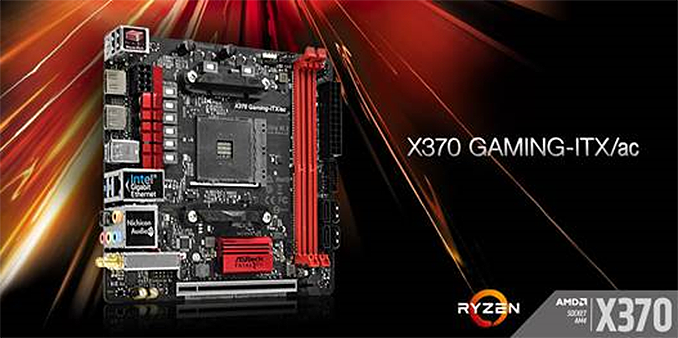
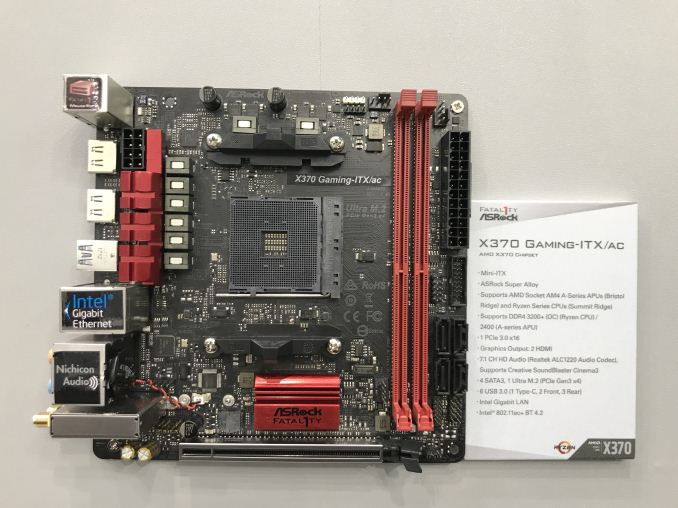
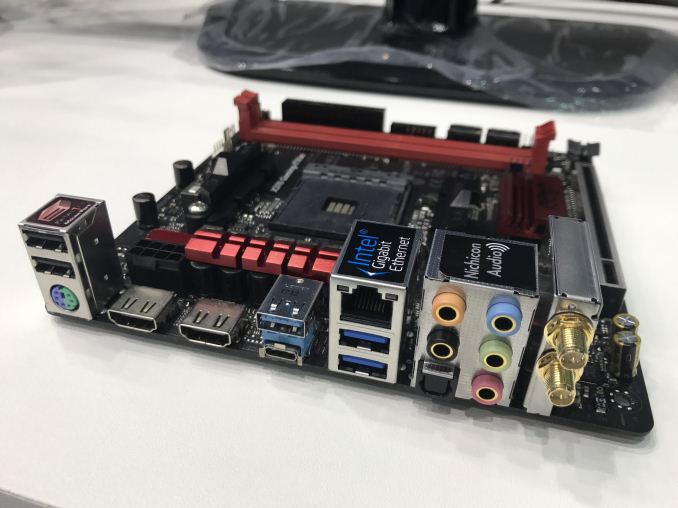


 Quote
Quote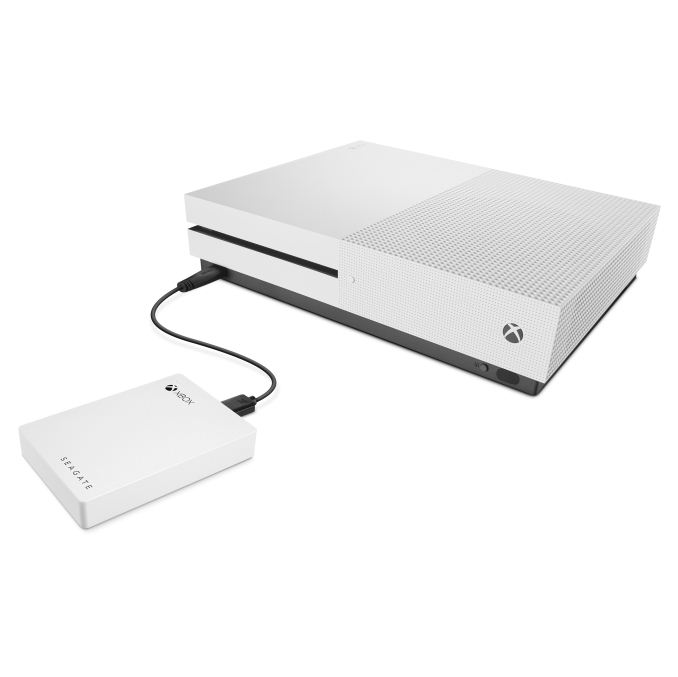
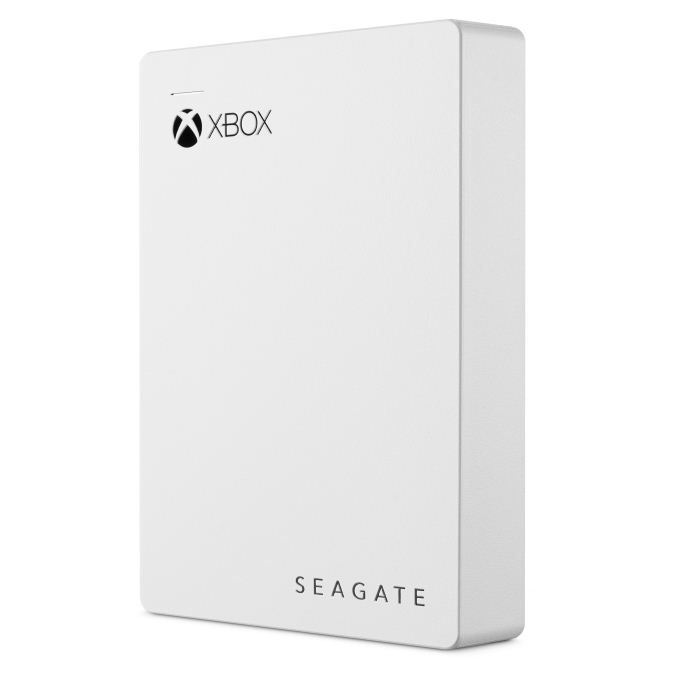
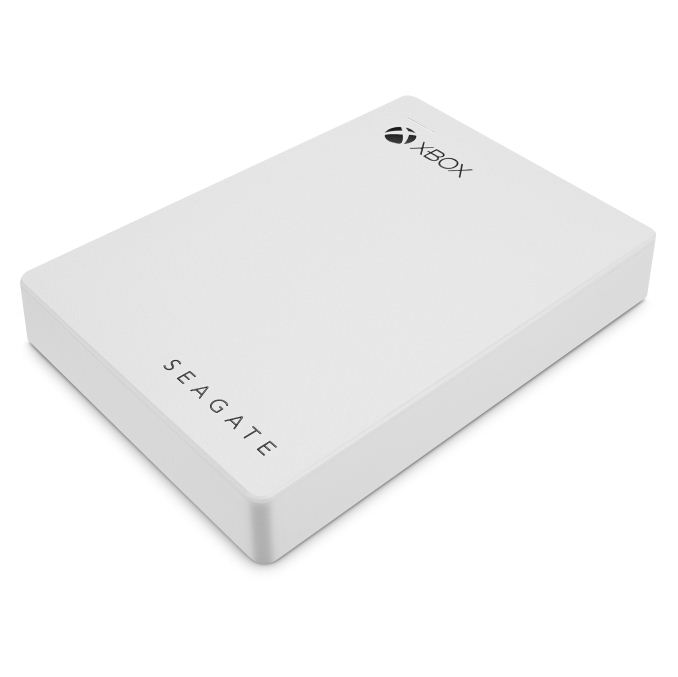
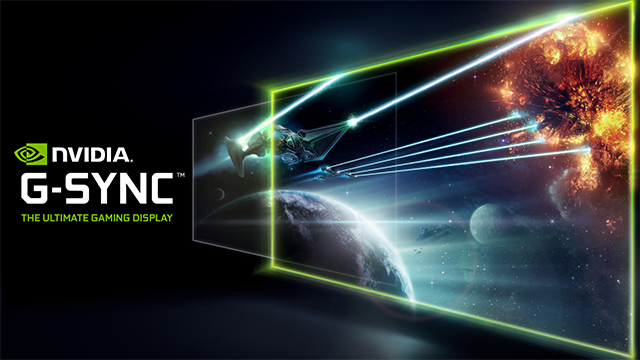
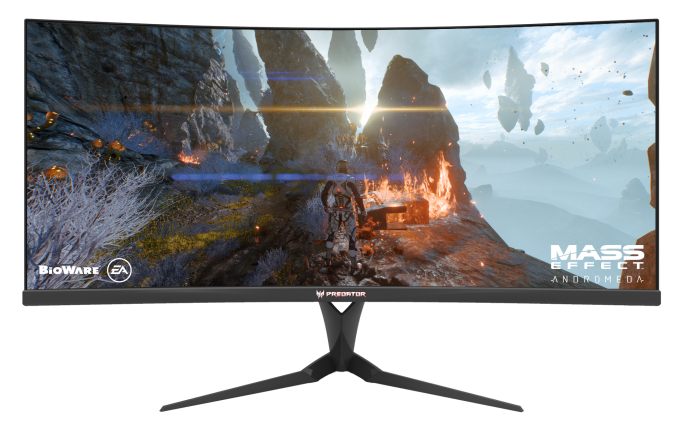
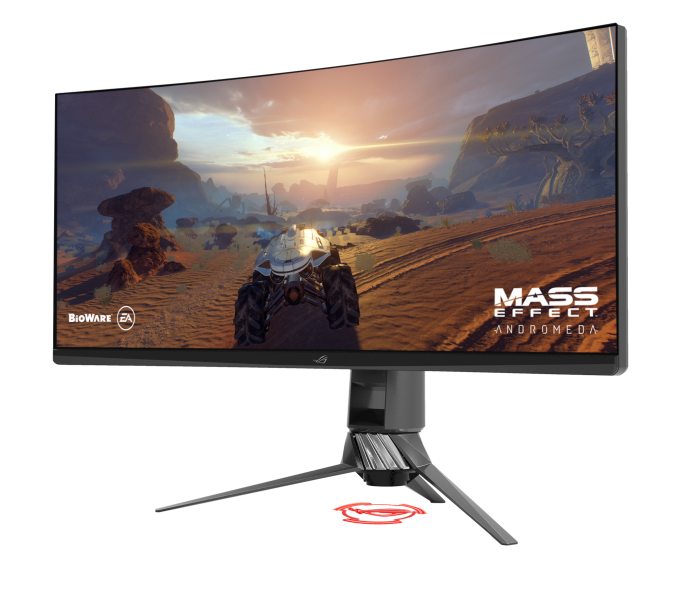
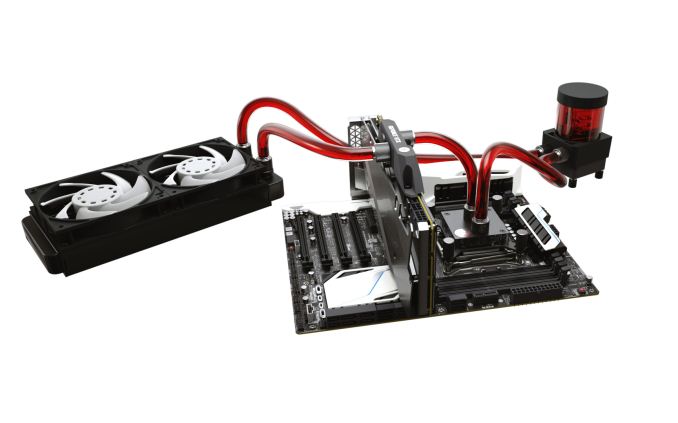
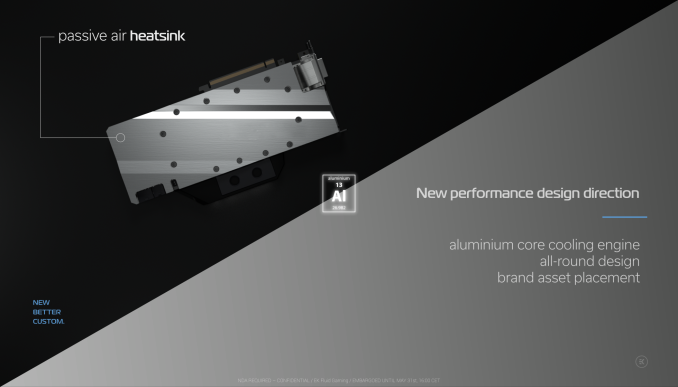
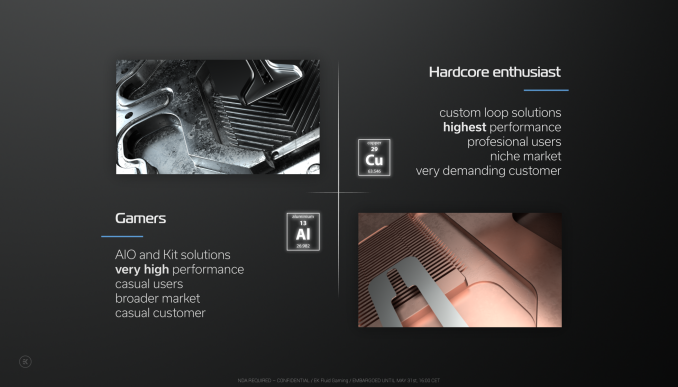


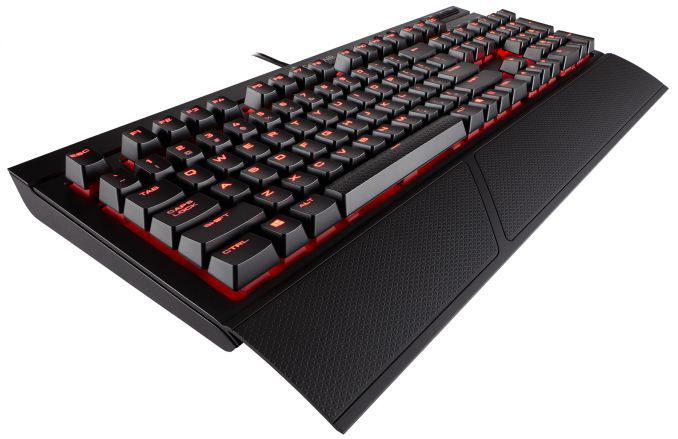



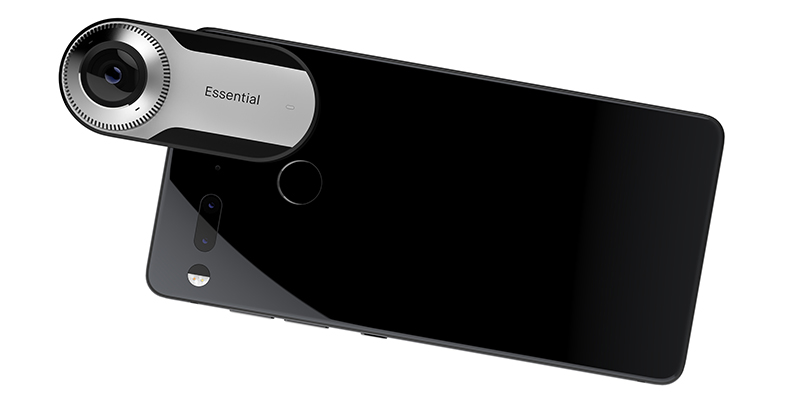

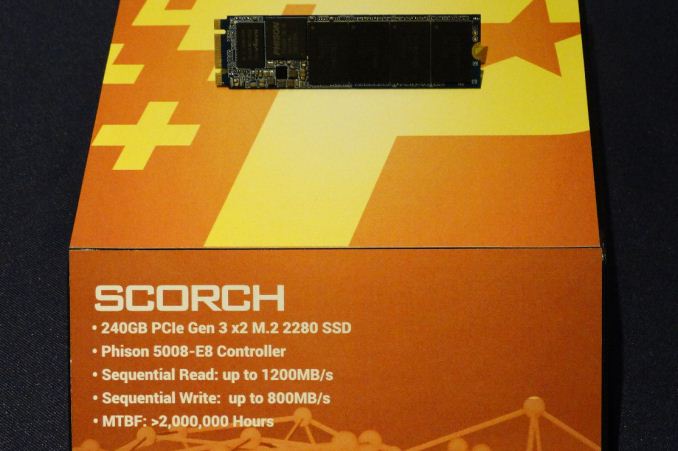

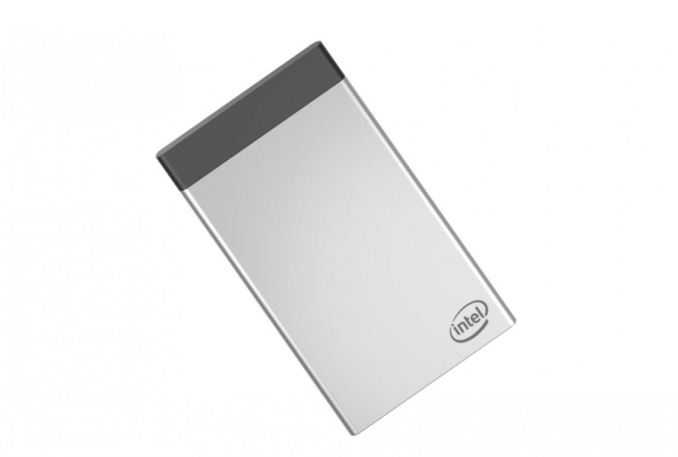
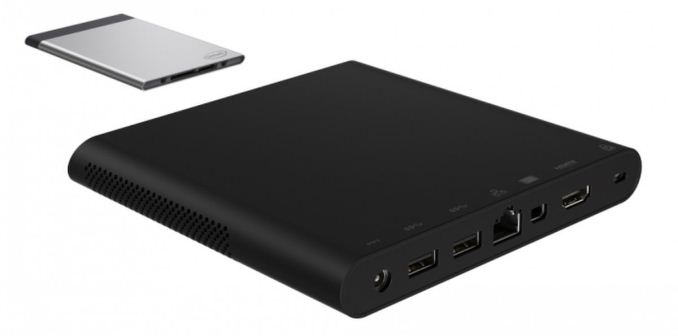
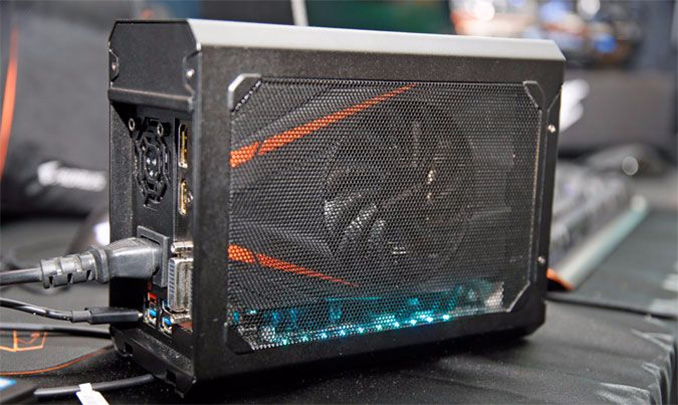
















Bookmarks